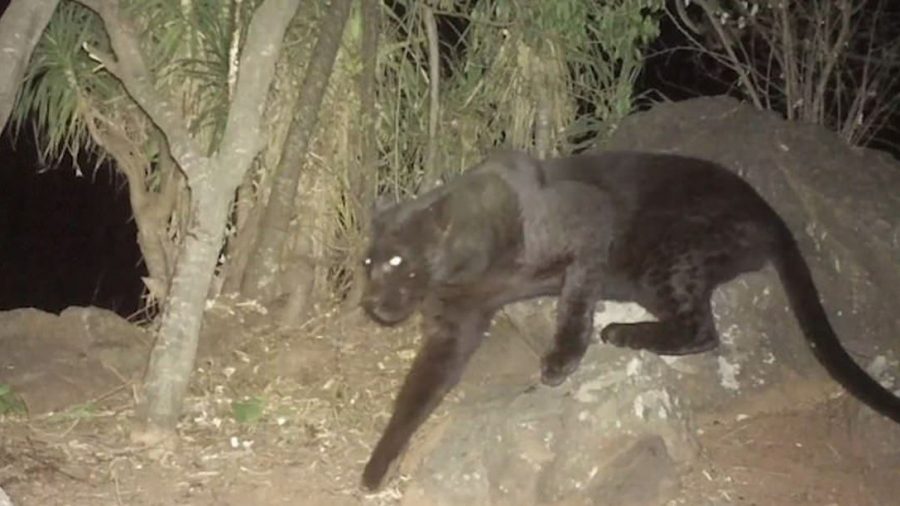The black leopard, also known as the black panther, was photographed in Kenya, which marks the first recorded sighting in 100 years.
Wildlife photographer Will Burrard-Lucas captured photos of the animal and posted them on his website.
“Since childhood I have been fascinated by stories of black panthers. For me, no animal is shrouded in more mystery, no animal more elusive, and no animal more beautiful,” he wrote.
It is the first time a sighting of the stunning creature has been confirmed since 1909.
Gepostet von LADbible am Dienstag, 12. Februar 2019
According to National Geographic, the extremely rare animal has melanism, where the body produces too much pigment. It noted that it’s the first time a black leopard has been seen in Africa in 100 years, and most sightings of the creature occur in Asia.
The San Diego Zoo in January confirmed that the photos are the first scientific documentation of the animal.
“Almost everyone has a story about seeing one, it’s such a mythical thing,” Nick Pilfold, the San Diego Zoo Global’s Institute for Conservation Research, told National Geographic.
He added: “Even when you talk to the older guys that were guides in Kenya many years ago, back when hunting was legal [in the 1950s and ‘60s], there was a known thing that you didn’t hunt black leopards. If you saw them, you didn’t take it.”
Meanwhile, the area where the animal was captured “is the only known spot in all of Africa to have black leopard,” Pilford said, USA Today reported.
Burrard-Lucas said he used a Camtraptions Camera Trap and set it on a path that the leopard appeared to be using.
The mythical creature has been SPOTTED! ????????????
Gepostet von Daily Mail am Dienstag, 12. Februar 2019
“The next day I eagerly checked the cameras but had no images of leopards,” Burrard-Lucas wrote on his website. “I was disheartened and suddenly felt the enormity of what I was trying to achieve. Surely I was not going to be lucky enough to actually photograph a melanistic African leopard?!”
He let the cameras out for several more nights. He saw no black leopards until checking his last camera.
“As I scrolled through the images on the back of the camera, I paused and peered at the photograph [at top of page] in incomprehension…a pair of eyes surrounded by inky darkness… a black leopard!” he said. “I couldn’t believe it and it took a few days before it sank in that I had achieved my dream.”
A dream come true… https://t.co/pC5Lvebz6o
— Will Burrard-Lucas (@willbl) February 11, 2019
Over the next several days, he captured more photos of the black leopard.
“As far as I know, these are the first high-quality camera trap photographs of a wild melanistic leopard ever taken in Africa,” Burrard-Lucas said. “I can still scarcely believe that this project—which started out as a speculative recce trip—has paid such spectacular dividends!”
More Details
Pilford said most recorded sightings of black leopards have been spotted in Asian forests.
“Melanism occurs in about 11 percent of leopards globally. However, despite African leopards having the largest remaining range out of any of the subspecies, there has only been one confirmed case of melanism prior to these images,” he told the Daily Mail.
“The #blackleopard, known as a #blackpanther in Africa and Asia, is a secretive and elusive creature, one in which wildlife photographer Will Burrard-Lucas dreamed of capturing in high-quality photographs” https://t.co/zHyFJyHDiL pic.twitter.com/n8TGjbFeRD
— RoseToCreate (@RoseToCreate) February 12, 2019
“In addition to confirming black panthers in Africa, our observations are unique because Laikipia is a semi-arid shrubland, and previous melanistic observations come from more shaded habitats in tropical forests, which is in keeping with the understanding that melanism is an adaptation to camouflage against dark backgrounds.”
From The Epoch Times


